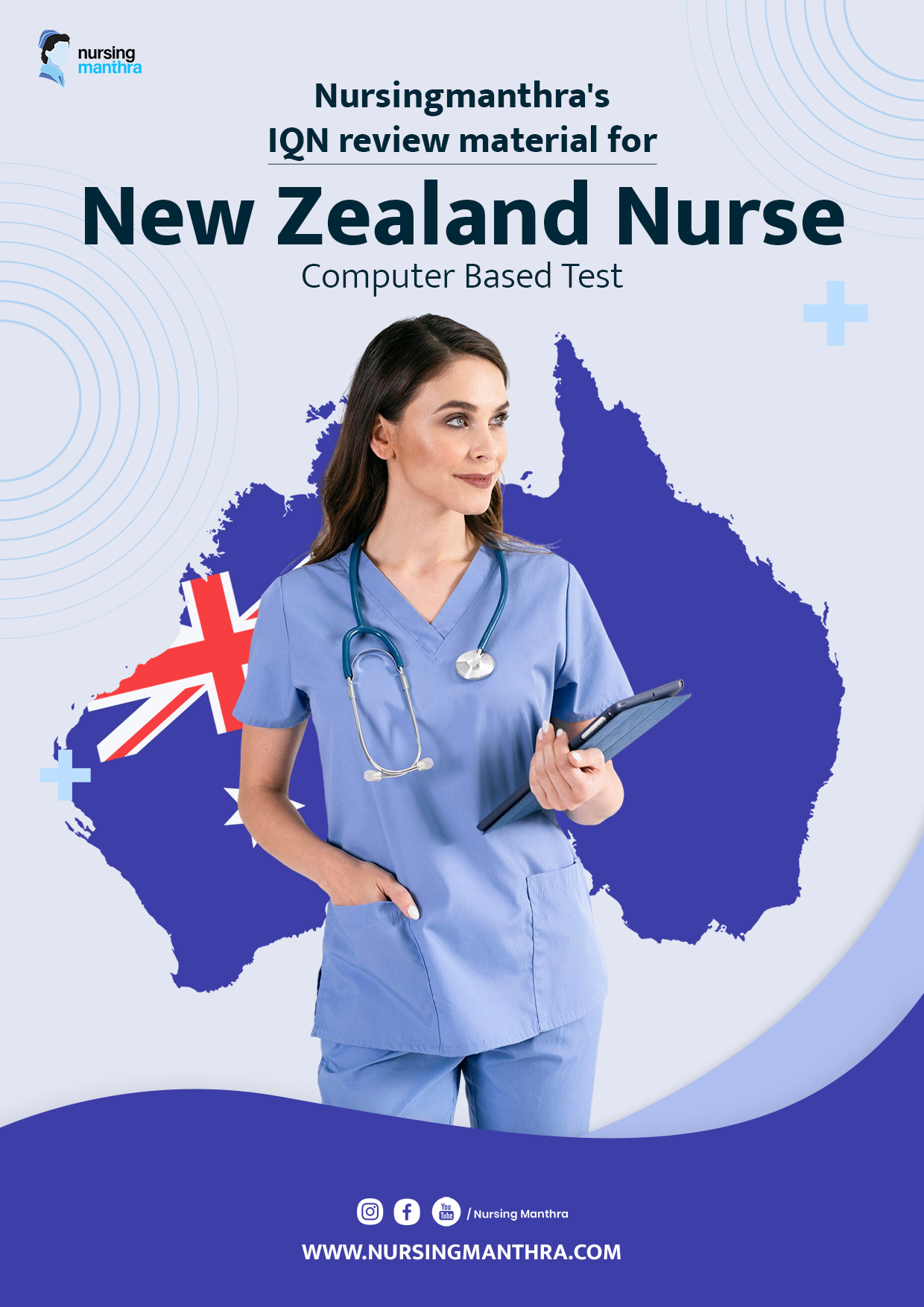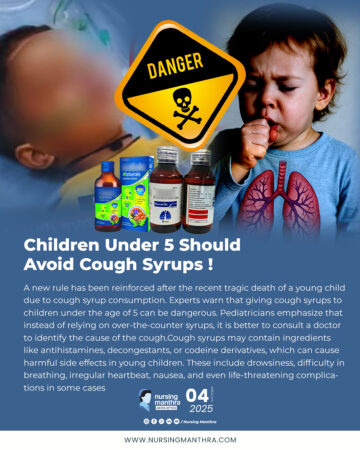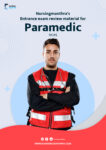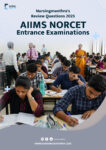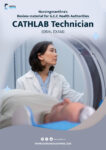1. What is a common symptom of an asthma attack in a child?
A. Chest pain
B. Shortness of breath and wheezing ✅
C. Unable to speak one sentence completely
D. High fever and increased mucus production
Rationale: Wheezing and breathlessness are classic asthma signs due to airway narrowing.
2. What is the priority nursing care for a child with pneumonia and respiratory distress?
A. Educate on infection prevention
B. Assess respiratory status and SpO₂ ✅
C. Isolate the child
D. Provide a warm environment
Rationale: Monitoring oxygenation is vital in acute respiratory illness.
3. In the PQRSTU Pain Scale, what does “S” represent?
A. Site
B. Severity ✅
C. Sensation
D. Symptoms
Rationale: “S” indicates how intense the pain is, usually rated on a scale.
4. A mother refuses vaccination for her child. What is the best response?
A. Let’s talk more about your concerns ✅
B. Vaccinate without consent
C. Give pamphlets
D. No action required
Rationale: Open dialogue helps address hesitations respectfully and informatively.
5. A post-op patient demands more painkillers. What should the nurse do?
A. Ask to wait
B. Inform the physician ✅
C. Give the injection immediately
D. Mention shift is ending
Rationale: Pain should be reassessed and managed per physician review.
6. If a patient misbehaves, what should the nurse do first?
A. Ignore it
B. Respond and inform senior staff ✅
C. Write in complaint register
D. Call police
Rationale: Handle it professionally and escalate to senior staff as needed.
7. After 6 hours of NPO, what are common signs?
A. Excessive thirst
B. Dry mouth, weakness, poor skin turgor ✅
C. Low blood pressure
D. Low SpO₂
Rationale: Signs of mild dehydration develop after prolonged NPO.
8. A cancer patient says, “This will never go away.” What’s the best nurse response?
A. Reassure and listen calmly ✅
B. Refer to psychiatrist
C. Say “Don’t worry”
D. Tell patient to take medication
Rationale: Empathetic listening helps address emotional distress.
9. What does PQRST stand for in pain assessment?
A. Palliation, Quality, Radiation, Severity, Timing
B. Provocation, Quality, Radiation, Severity, Timing ✅
C. Provocation, Quantity, Range, Sensation, Timing
D. Palliation, Quantity, Radiation, Sensation, Timing
Rationale: PQRST assesses pain triggers, type, spread, intensity, and timing.
10. In PQRSTU, what does “Q” stand for?
A. Pain scale intensity
B. Type of pain (sharp, dull, etc.) ✅
C. Pain location
D. Duration of pain
Rationale: “Q” refers to how the pain feels (e.g., sharp or burning).
11. What does “Severity” mean in PQRSTU?
A. Location
B. Type
C. Intensity ✅
D. Onset time
Rationale: Severity measures the level of pain using scales or descriptions.
12. How do you assess pain severity in the PQRSTU model?
A. Ask for a 0–10 rating ✅
B. Ask pain type
C. Check location
D. Ask quality of pain
Rationale: Rating pain numerically helps determine its intensity.
13. Why is dabigatran prescribed?
A. Decrease venous return
B. Prevent clot formation ✅
C. Reduce blood pressure
D. Lower stroke risk
Rationale: Dabigatran is an anticoagulant that prevents blood clots.
14. You notice a rash before giving antibiotics. What’s the best action?
A. Give drug, apply lotion
B. Inform doctor, apply lotion
C. Withhold drug, inform doctor ✅
D. Record and apply lotion
Rationale: Rash may signal allergy—stop the drug and inform the physician.
15. What is a delusion?
A. Fixed false belief ✅
B. Sensory perception without stimulus
C. Misinterpretation of real stimuli
D. Déjà vu feeling
Rationale: Delusions are false beliefs not based in reality.
16. A child is showing distress from pneumonia. What is the top priority?
A. Isolation
B. Monitor respiratory rate and oxygen saturation ✅
C. Infection education
D. Provide warm environment
Rationale: Respiratory monitoring is vital in pneumonia management.
17. A post-op patient is in pain. What should you do?
A. Delay medication
B. Notify physician for reassessment ✅
C. Increase dose without order
D. Say shift is ending
Rationale: Pain must be reassessed and addressed by the care team.
18. A cancer patient expresses hopelessness. What is the priority response?
A. Reassure and listen ✅
B. Refer to psychiatrist
C. Promise cure
D. Focus on medication
Rationale: Empathy and listening are key in emotional support.
19. A patient becomes aggressive. What should the nurse do?
A. Stay silent
B. Respond and inform senior staff ✅
C. Note complaint only
D. Call security first
Rationale: Address the behavior and escalate per protocol.
20. What symptom is common in mild NPO dehydration?
A. Thirst only
B. Dry mouth, weak, skin turgor ↓ ✅
C. Low BP
D. SpO₂ drop
Rationale: NPO >6 hrs may cause mild dehydration signs.
21. How should a nurse address a parent refusing vaccines?
A. Explore concerns through discussion ✅
B. Ignore refusal
C. Force vaccination
D. Give pamphlets only
Rationale: Open communication helps reduce fear and misinformation.
22. In PQRST pain scale, what does “T” represent?
A. Temperature
B. Timing ✅
C. Type
D. Treatment
Rationale: “T” refers to when pain started and how long it lasts.
23. What is the purpose of dabigatran?
A. BP reduction
B. Clot prevention ✅
C. Venous return control
D. Stroke prevention
Rationale: Dabigatran reduces thrombus formation by inhibiting thrombin.
24. A patient has a rash before antibiotics. What is the correct action?
A. Give meds and apply lotion
B. Apply lotion only
C. Hold drug and inform physician ✅
D. Record and continue
Rationale: A rash may signal allergy—pause and notify the doctor.
25. Define a delusion:
A. Fixed false belief ✅
B. Sensory hallucination
C. Illusion of stimuli
D. Déjà vu
Rationale: Delusions are false beliefs held despite evidence to the contrary.
If you would like access to “Updated New Zealand Nurse CBT Review questions”
, you can purchase the complete study material using the link provided below. For any assistance or to request the material, please contact NursingManthra via WhatsApp.” +971502515717

